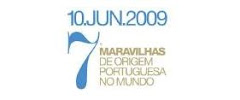Portugal in late 60's. And a small place frozen in time.
A lagoon, that slowly swallows everything: the land, the people and time itself.
In such a scenery we see a beautiful woman locked up by her husband amond dogs and servants. Maria das Merces, a prisoner of her love to a patriarchal man, Tomas. Though suggested time implies the era of sexual revolution and the rise of feminism, the lagoon and its prince are exeptions.
The dauphin tends to appropriate everything: the village, the waters, his wife, even his servant, Domingos. Tomas imprisons everyone and everything. This creates an atmosphere similar to Kafka's nightmares. An inescapable labyrinth.
The drama that occurs in that secluded village seems strange and inexplicable. Two victims of love and imprisonment: Maria das Merces and Domingos. The prince missing. And the only one who can explain everything is the hunter, a friend of Tomas and Merces. But he doesn't explain everything. He does not reveal the whole secret. Instead he keeps it away from strangers' eyes (thus, from viewers, too). One can master the ending himself/herself.
A film, full of secret meanings; the colours: red, green, blue. Each one of them is a symbol. Each one of them represents some character. And dogs. Dogs, dogs, dogs... A psichological drama that, perhaps, needed more mysticism. Or the director didn't reveal it. All in all, a movie, worth seeing: catchy, poetic and definitely not "pop".
Conclusion: one more novel to put into a must-read list: "José Cardoso Pires, O Delfim".
Um filme muito bem e interessante, mas não é o mais melhor eu vi.


















